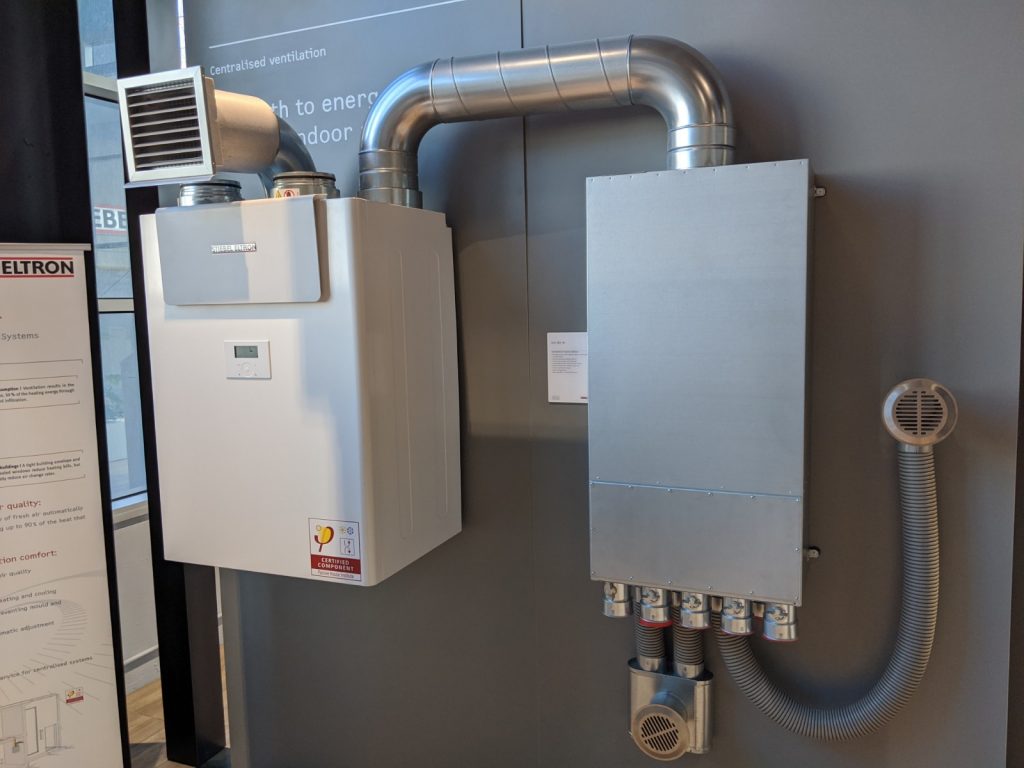The Future of HRV in Energy-Efficient Home Design
Wiki Article
The All-Inclusive Guide to the Uses of Heat Recovery Ventilation in Modern Buildings
Heat Recovery Ventilation (HRV) systems represent a significant innovation in constructing modern technology (HRV Heat Recovery Ventilation). They supply a technique for trading stagnant indoor air with fresh outside air while lessening power loss. This strategy not just improves interior air top quality but additionally contributes to power effectiveness in both residential and commercial buildings. Recognizing the various applications and advantages of HRV can reveal its important function in contemporary layout and sustainability initiatives. The effects of this modern technology deserve discovering additionallyRecognizing Heat Recovery Ventilation Solutions

Many modern buildings focus on power effectiveness, understanding warmth recuperation air flow (HRV) systems is essential for enhancing interior air quality and decreasing energy consumption. HRV systems function by transferring warmth from stale indoor air to incoming fresh air, efficiently keeping comfortable indoor temperatures while lessening energy loss. These systems contain a heat exchanger, fans, and ductwork that assist in the blood circulation of air. During wintertime, HRV systems capture and recycle warm from the outgoing air, while in summer season, they can aid cool down incoming air. By continuously exchanging air, HRV systems also lower moisture and the concentration of interior toxins. Correct installation and upkeep of HRV systems are necessary for their performance and efficiency in improving overall structure efficiency and comfort.
Advantages of Heat Recovery Ventilation
Heat recovery ventilation systems provide various benefits that enhance both energy efficiency and indoor air high quality in modern buildings. By catching and recycling power from exhaust air, these systems considerably minimize heating and air conditioning costs, causing lower energy usage. Additionally, they maintain a stable flow of fresh outside air, lessening the risk of indoor air contaminants and irritants. This continuous exchange assists control moisture levels, preventing mold development and ensuring a much healthier living setting. In addition, HRV systems add to sustainability goals by reducing total carbon footprints. Their ability to maximize air flow without compromising thermal comfort makes them a valuable addition to contemporary structure style, promoting both financial and ecological advantages.Applications of HRV in Residential Buildings
As home owners increasingly focus on energy effectiveness and indoor air high quality, the applications of warmth recovery ventilation (HRV) systems in residential structures have ended up being a lot more widespread. HRV systems are specifically useful in tightly sealed homes, where keeping fresh air blood circulation is necessary for avoiding wetness accumulation and indoor toxins. They effectively transfer warmth from outbound stagnant air to inbound fresh air, lowering power costs connected with home heating and air conditioning. Furthermore, HRVs can improve comfort degrees by controling moisture and Read Full Article temperature level. They are also adaptable for different household layouts, including single-family homes and multi-unit structures. In general, integrating HRV systems sustains lasting living techniques while ensuring a healthier interior environment for passengers.HRV in Business and Commercial Setups
In industrial and commercial settings, the application of heat healing air flow (HRV) systems has ended up being progressively critical for maximizing power effectiveness and maintaining air quality. These systems properly move warmth from exhaust air to incoming fresh air, minimizing the demand for extra heating or air conditioning. This not only reduces energy expenses but likewise contributes to sustainability initiatives. Industries such as production, warehousing, and office complex benefit significantly from HRV systems, as they assist control temperature and humidity degrees, making sure a comfortable and effective setting. HRV systems help in removing contaminants and excess dampness, boosting indoor air high quality. As regulations around air high quality end up being stricter, the adoption of HRV modern technology is most likely to expand, making it a critical component of modern business and industrial framework.Future Patterns in Heat Recovery Ventilation Technology

Frequently Asked Questions
Exactly How Does Heat Recovery Ventilation Effect Indoor Air Quality?
Heat recovery ventilation substantially improves interior air high quality by continually exchanging stagnant interior air with fresh outdoor air while recovering energy. This process minimizes contaminants, maintains suitable humidity levels, and guarantees a much healthier setting for residents.Can HRV Systems Be Set Up in Existing Structures?
HRV systems can indeed be mounted in existing structures. Retrofitting might call for adjustments to ductwork and ventilation designs, but it significantly enhances power effectiveness and indoor air top quality, making it a practical alternative for older structures.What Upkeep Is Needed for HRV Solutions?

Exist Specific Climates Where HRV Is A Lot More Reliable?
Heat recovery ventilation systems are specifically my blog efficient in environments with significant temperature distinctions between periods. These systems enhance power performance by recouping warm from exhaust air, making them suitable for both cold and reasonably cozy settings.Exactly How Do HRV Equipments Affect Power Costs?

Report this wiki page